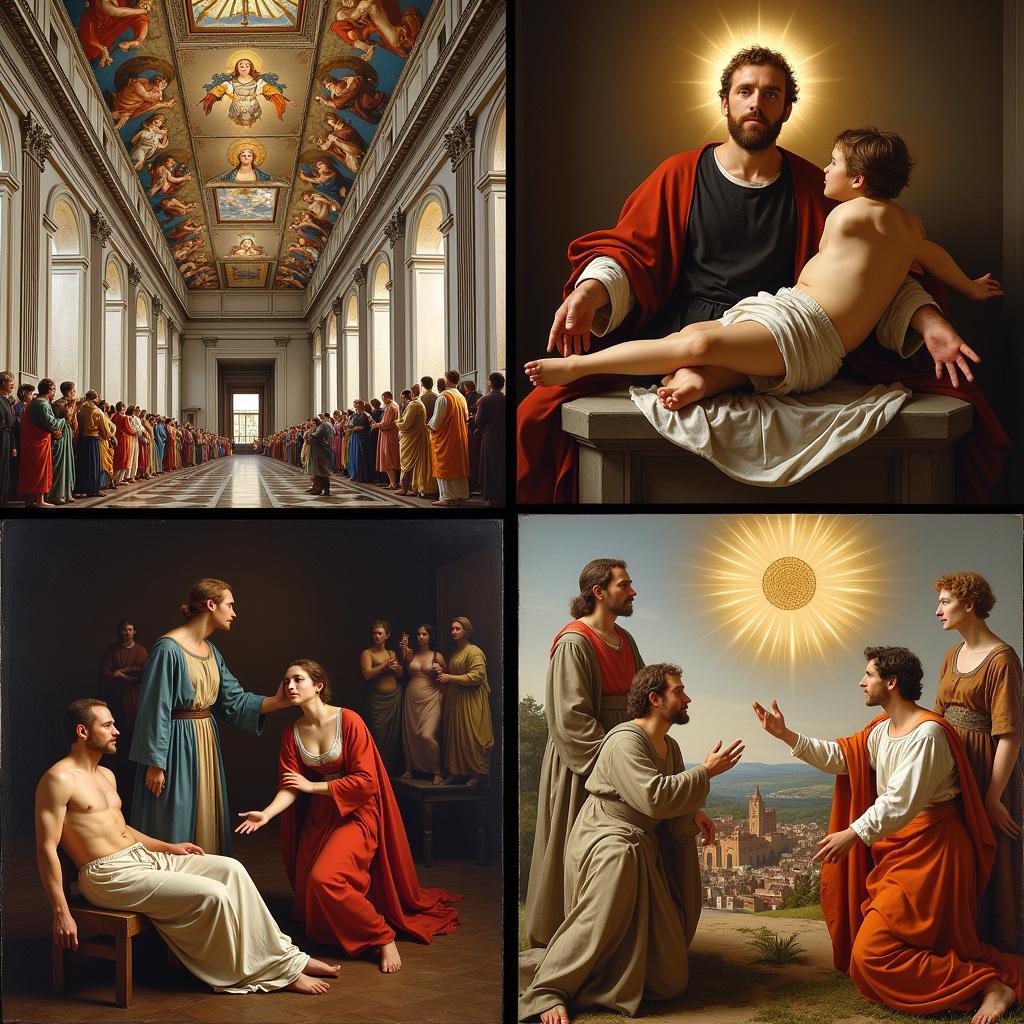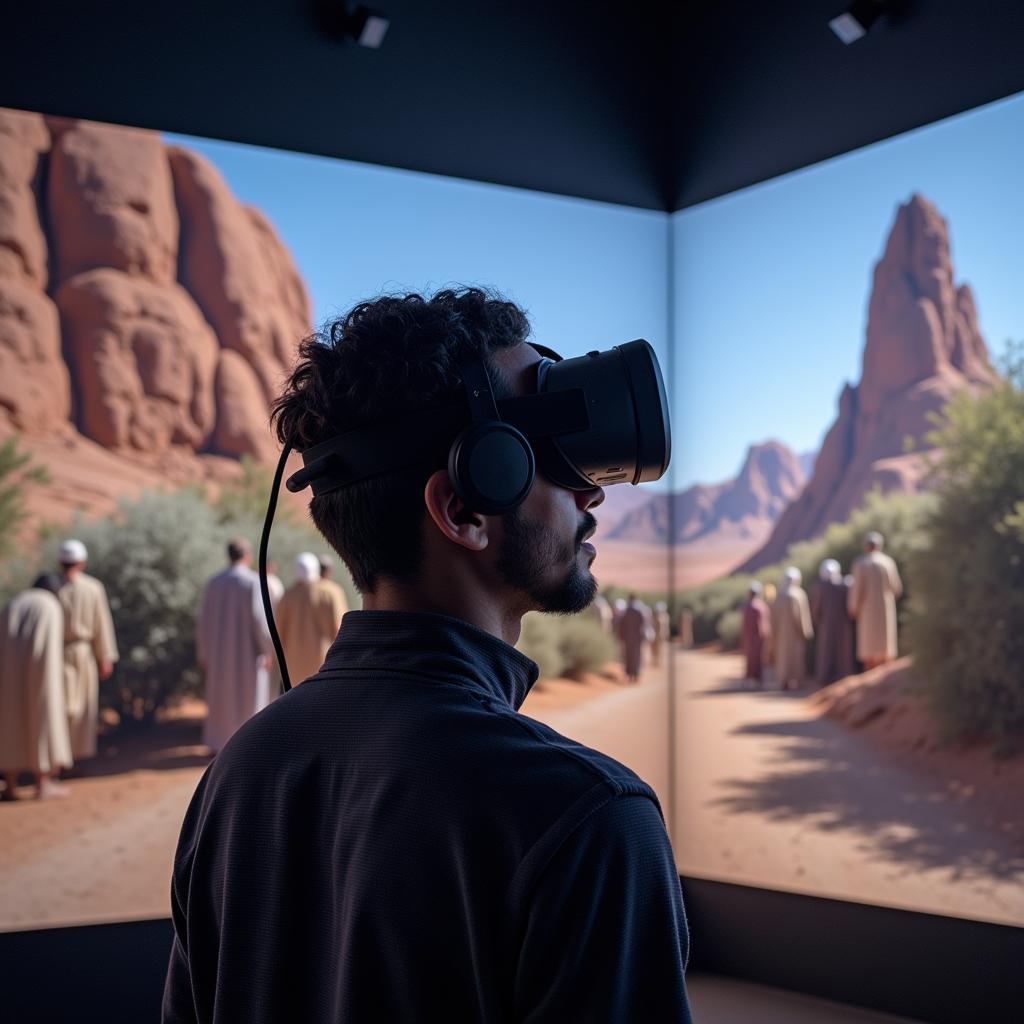Scriptural Art, a powerful medium that intertwines faith and artistic expression, has captivated audiences for centuries. From illuminated manuscripts to contemporary digital creations, it serves as a visual testament to the stories, teachings, and spiritual experiences found within sacred texts. This exploration delves into the rich history, diverse forms, and profound impact of scriptural art, offering insights into its enduring appeal and its evolving role in the digital age.
The Enduring Legacy of Scriptural Art
Throughout history, artists have drawn inspiration from religious scriptures to create works that both illuminate and interpret these sacred texts. Early forms of scriptural art, such as the intricate mosaics and frescoes adorning the walls of Byzantine churches, sought to convey the grandeur and mystery of the divine. Medieval illuminated manuscripts, painstakingly crafted by monks, brought biblical narratives to life with vibrant colors and elaborate calligraphy. These early works served not only as artistic expressions but also as vital tools for religious instruction and devotion, often reaching audiences who were unable to read the scriptures themselves.
You might be interested in wood bible verse wall art.
The Renaissance witnessed a flourishing of scriptural art, with masters like Michelangelo and Raphael creating iconic depictions of biblical scenes. These artists infused their works with humanism and emotion, breathing new life into familiar stories. The Reformation also had a profound impact on scriptural art, leading to a shift in focus from elaborate iconography to more direct and didactic representations of biblical narratives. This period saw the rise of Protestant art, which emphasized clarity and simplicity in its portrayal of religious themes.
 Renaissance Scriptural Art Masterpieces
Renaissance Scriptural Art Masterpieces
Scriptural Art in the Modern Era: Embracing New Forms and Technologies
The 20th and 21st centuries have seen a continued evolution of scriptural art, with artists exploring new mediums and techniques to express their faith. From abstract expressionism to digital art, contemporary scriptural art embraces a wide range of styles and approaches. The advent of digital technology has opened up exciting new possibilities for artists working with scriptural themes, allowing them to create immersive and interactive experiences that engage viewers in unprecedented ways.
What are some examples of modern scriptural art? Modern scriptural art ranges from abstract paintings inspired by biblical themes to digital installations that explore spiritual concepts. It also encompasses a variety of mediums, including sculpture, photography, and video art.
Explore more about bible framed art.
Why is Scriptural Art Important?
Scriptural art plays a crucial role in connecting people to their faith and providing a visual language for spiritual exploration. It can inspire contemplation, evoke emotion, and foster a deeper understanding of religious texts. For believers, scriptural art can serve as a powerful reminder of their faith and a source of comfort and inspiration. For those outside a particular faith tradition, it can offer a glimpse into the beliefs and values that have shaped cultures and societies throughout history.
How does scriptural art enhance spiritual understanding? Scriptural art provides a visual entry point into complex theological concepts and narratives, making them more accessible and engaging for a wider audience. It can also spark dialogue and encourage deeper reflection on spiritual themes.
Johnathan Miller, a renowned theologian and art historian, emphasizes the importance of scriptural art: “Scriptural art acts as a bridge between the spiritual and the tangible, allowing us to engage with sacred texts in a profound and personal way.”
The Future of Scriptural Art: A Digital Renaissance
The digital age presents exciting opportunities for scriptural art to reach new audiences and explore innovative forms of expression. Virtual reality and augmented reality technologies offer the potential to create immersive experiences that transport viewers into the world of the scriptures. Digital platforms also provide artists with new ways to share their work and connect with communities of faith around the globe.
 Digital Scriptural Art: VR Experiences
Digital Scriptural Art: VR Experiences
Check out more about christian art publishers planner 2024.
Conclusion
Scriptural art continues to evolve, adapting to new technologies and reflecting the changing spiritual landscape of our time. From ancient mosaics to digital installations, it remains a powerful force for connecting people to their faith and inspiring creative expression. As we embrace the possibilities of the digital age, scriptural art is poised for a new renaissance, offering fresh perspectives on timeless stories and inviting us to explore the divine through the lens of artistic vision. Scriptural art, in its many forms, continues to offer a profound and engaging way to connect with the spiritual world. You can also check out resources related to lds art pioneers and jesus art lds.
FAQ
- What is the primary purpose of scriptural art? To visually represent stories, teachings, and spiritual experiences found within sacred texts.
- How has technology impacted scriptural art? It has opened up new possibilities for creative expression and audience engagement.
- What are some common themes in scriptural art? Themes often include biblical narratives, depictions of religious figures, and explorations of spiritual concepts.
- Where can I find examples of scriptural art? Museums, churches, art galleries, and online platforms all offer access to scriptural art.
- How can I learn more about scriptural art? Books, online resources, and educational institutions provide avenues for further exploration.
- What is the significance of illuminated manuscripts in scriptural art? They played a crucial role in preserving and disseminating religious texts in the pre-printing era.
- How has the Reformation influenced scriptural art? It led to a shift towards simpler and more didactic representations of biblical narratives.
When you need assistance, please contact us at Phone Number: 02462573573, Email: [email protected] or visit us at Savico Megamall, 7-9 Đ. Nguyễn Văn Linh, Gia Thụy, Long Biên, Hà Nội 10000, Việt Nam. We have a 24/7 customer service team.